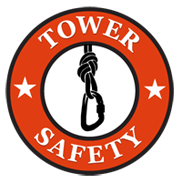OSHA 30-Hour
Construction
OSHA 1926 30-hour Construction Certification:
OSHA 1926 30-hour Construction Certification is intended to provide a variety of training to workers with some safety responsibility. Per OSHA’s instruction, the training should emphasize hazard identification, avoidance, control and prevention, not OSHA standards. Instructional time must be a minimum of 30 hours.
There is no prerequisite and anyone can attend this training, but it is geared towards a supervisor, lead-man, upper manager or anyone who has some responsibility for safety and health.
Per OSHA there are 15 hours of Mandatory topics with time allotments for each topic, 12 hours of Elective topics, and 3 hours of Optional topics. The minimum topic requirements are as follows:
b) Managing Safety and Health –May include Injury and Illness Prevention Programs, job site inspections, accident prevention programs, management commitment and employee involvement, work site analysis, hazard prevention and control, accident investigations, how to conduct safety meetings, and supervisory communication.
c) Personal Protective Equipment (PPE)
d) Health Hazards in Construction – noise, hazard communication, crystalline silica, lead or any other construction health hazard.
e) Stairways and Ladders
f) OSHA Focus Four Hazards :
- Falls (minimum 1 hour and 15 minutes)
- Electrocution
- Struck-By (i.e. falling objects, trucks, cranes, …)
- Caught-In or Between (i.e. trench hazards, equipment, …
Given current OSHA and industry information regarding construction worksite illnesses, injuries, and/or fatalities, the student will be able to recognize [fall, caught-in or between, struck-by, electrocution] hazards in construction.
Specifically for each of the focus four, the student will be able to:
- Identify major hazards
- Describe types of hazards
- Protect him/herself from these hazards
- Recognize employer requirements to protect workers from these hazards
Additional OSHA 30 subjects:
a) Concrete and Masonry Construction
b) Confined Space Entry
c) Cranes, Derricks, Hoists, Elevators, & Conveyors
d) Ergonomics
e) Excavations
f) Fire Protection and Prevention
g) Materials Handling, Storage, Use and Disposal
h) Welding and Cutting
i) Powered Industrial Vehicles
j) Safety and Health Programs
k) Scaffolds
l) Steel Erection
m) Tools – Hand and Power
n) Motor Vehicles, Mechanized Equipment and Marine Operations; Rollover Protective Structures and Overhead Protection; and Signs, Signals and Barricades







